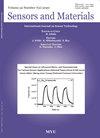利用光探测和测距传感器探测和导航林木茂密环境中的无人驾驶飞行器
IF 1
4区 材料科学
Q4 INSTRUMENTS & INSTRUMENTATION
引用次数: 0
摘要
随着自动导航技术的发展,导航控制已成为无人驾驶车辆行驶过程中不可或缺的核心技术。与室内环境相比,室外林木环境更加复杂、可控性更差、不可预知性更强,因此室外林木环境下的导航控制研究尤其受到广泛关注。为了实现无人车在未知环境中的运动控制和避障,本研究使用光探测与测距(LiDAR)传感器来感知周围环境。通过对激光雷达反射的点云进行平面网格划分,我们可以立即建立可行区域。同时,利用人工势场算法,规划出在未知环境中使用的稳定避障和导航路径。在实际的树林导航实验中,我们使用了自主研发的具有阿克曼转向几何结构的无人车,对我们提出的激光雷达检测方法进行了评估。实验结果表明,所提出的方法能够有效探测障碍物。实验结果表明,该方法的平均导航成功率高达 85%。实验结果表明,该系统可以在不同的未知环境中稳定、安全地导航。本文章由计算机程序翻译,如有差异,请以英文原文为准。
Detection and Navigation of Unmanned Vehicles in Wooded Environments Using Light Detection and Ranging Sensors
With the advancement of automatic navigation, navigation control has become an indispensable core technology in the movement of unmanned vehicles. In particular, research on navigation control in outdoor wooded environments, which are more complex, less controlled, and more unpredictable than indoor environments, has received widespread attention. To realize the movement control and obstacle avoidance of unmanned vehicles in unknown environments, in this study, we use light detection and ranging (LiDAR) sensors to sense the surrounding environment. By plane meshing the point cloud reflected from LiDAR, we can instantly establish feasible regions. At the same time, using the artificial potential field algorithm, a stable obstacle avoidance and navigation path is planned for use in an unknown environment. In an actual woods navigation experiment to evaluate our proposed LiDAR detection method, we used an independently developed unmanned vehicle with Ackermann steering geometry. Experimental results indicate that the proposed method can effectively detect obstacles. The accuracy requirement is within 30 cm from the navigation target, and the experimental results show that the average navigation success rate of the proposed method is as high as 85%. The experimental results demonstrate that the system can stably and safely navigate in scenarios with different unknown environments.
求助全文
通过发布文献求助,成功后即可免费获取论文全文。
去求助
来源期刊

Sensors and Materials
工程技术-材料科学:综合
CiteScore
2.00
自引率
33.30%
发文量
294
审稿时长
3 months
期刊介绍:
Sensors and Materials is designed to provide a forum for people working in the multidisciplinary fields of sensing technology, and publishes contributions describing original work in the experimental and theoretical fields, aimed at understanding sensing technology, related materials, associated phenomena, and applied systems. Expository review papers and short notes are also acceptable.
 求助内容:
求助内容: 应助结果提醒方式:
应助结果提醒方式:


